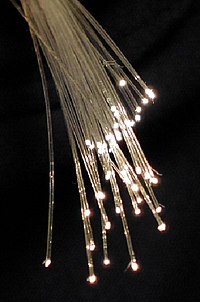
Photo from wikipedia
In this paper, acoustic emission (AE) signals obtained during quasi-static crack propagation in adhesively bonded beech wood were classified using an unsupervised pattern recognition method. Two ductile one-component polyurethane (1C-PUR)… Click to show full abstract
In this paper, acoustic emission (AE) signals obtained during quasi-static crack propagation in adhesively bonded beech wood were classified using an unsupervised pattern recognition method. Two ductile one-component polyurethane (1C-PUR) adhesives with the same formulation except for one system being reinforced with short polyamide (~ 1 mm long) fibers were compared to a relative brittle phenol–resorcinol–formaldehyde (PRF) adhesive. Using only localized AE signals, it was shown that the signals originating from the crack propagation could be classified into two different clusters. Comparing the AE signals with a new fractography method, it was estimated that different clusters are due to distinct failure mechanisms, with signals of cluster 1 being associated with wood failure and signals of cluster 2 with adhesive failure. The obtained results suggest that for the PRF adhesive the wood fibers help to slow down the crack propagation. A similar but lesser effect was noted for the polyamide fibers added to the 1C-PUR adhesive matrix.
Journal Title: Wood Science and Technology
Year Published: 2019
Link to full text (if available)
Share on Social Media: Sign Up to like & get
recommendations!